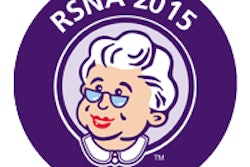
NATIONAL HARBOR, MD - Patients often struggle to comprehend their radiology reports, but software developed to annotate the reports in lay language could help, according to a Saturday presentation at the Society for Imaging Informatics in Medicine (SIIM) annual meeting.
A team from the University of Pennsylvania has created prototype Web-based software that can highlight key terms in knee MRI reports and provide definitions in lay language.
"In the era toward patient empowerment, we believe that developing a patient-oriented platform is the natural next step in optimizing radiology reports," said Dr. Seong Cheol Oh. He presented the system, named Patient-Oriented Radiology Reporter (PORTER), during a scientific session at SIIM 2015.
Patient communication
In this new era of patient empowerment, effective communication with patients is critical in radiology, Oh said. There's also been a rise of Web-based portals that provide ubiquitous patient access to medical records, including radiology reports.
"With this increase in patient access to their individual radiology reports, there's a growing awareness that there's a lot of technical language and medical jargon included throughout the radiology report, and this results in a sense of dissatisfaction for the patient consumer," he said.
In the hope of promoting patient-centered care and improving communication between radiologists and patients, the researchers developed the PORTER software to provide a lay-language translation of radiology reports. PORTER's three modules consist of a lay-language glossary of terms to annotate knee MRI reports, a module to upload text of radiology reports to a database, and an interactive Web-based user interface, Oh said.
To create the glossary, the researchers first analyzed 100 knee MRI reports from three hospitals affiliated with a single university health system to discover the most frequently used words and word pairs (after excluding stop words such as "um" or "uh"). Next, the group built a lay-language glossary of 313 common and clinically important terms.
The glossary included anatomical structures, localization, imaging findings, pathology, and common phrases. Lexical variants of terms (such as "menisci" and "meniscal") were specified with reference to the primary term (i.e., meniscus). The group then evaluated each of the definitions using the Flesch-Kincaid readability index and the Flesch-Kincaid Grade Level formula to ensure that the reports would have readability equivalent to U.S. school grade 10 or less.
The glossary was constructed as a shared spreadsheet using Google Docs and made available as a Web service using Representational State Transfer (REST) architecture. The Web service used a private URL to the document to read it and produce the information with JavaScript Object Notation (JSON), Oh said. Next, the JSON validation service confirmed the use of correct syntax.
The team used a secure Web service to upload the radiology reports. The server is outside of the institution's firewall and does not store any patient protected health information (PHI). It accepts an arbitrary eight-digit numeric examination ID, the patient's date of birth, report text, and an identifier for the interpreting radiologist. The exam ID and date of birth are encrypted and stored as a 32-character hash code.
The user interface for patients shows the annotated report on the left side of the screen; all of the recognized terms are underlined with pop-up balloons for the patients to review lay definitions, and, if available, a picture or image from Wikipedia will appear on the right side of the screen to assist in patient understanding.
The researchers evaluated PORTER on 175 randomly selected knee MRI reports. The reports contained a total of 13,005 instances of glossary terms, with a range of 12 to 125 per report and a median of 75. Each report included a median of 44 unique glossary terms (range, 10-64).
More patient-centered reports
A 2009 commentary in Radiology predicted that radiology reports will become more patient-centered and will use more structured organization and standardized language, Oh noted.
"Incremental improvements have been realized in the latter, but the patient-centered aspect of the report is still a work in progress," he said.
Recent studies have also raised concerns that radiology materials intended for a lay audience may still be too difficult for the average reader, Oh said.
"Radiology reports with long sentences, complex polysyllabic technical terms, and unfamiliar vocabulary add to the barrier to the average patient," he said.
For example, a sample of 10 outline-style knee MRI reports from the current study had a mean Flesch-Kincaid Grade Level score of 13.1.
In future research, the group would like to create multiple glossaries and databases for different radiology subspecialties. In addition, the system's effect on patient understanding and satisfaction with radiology reports is currently being evaluated, Oh said.


















